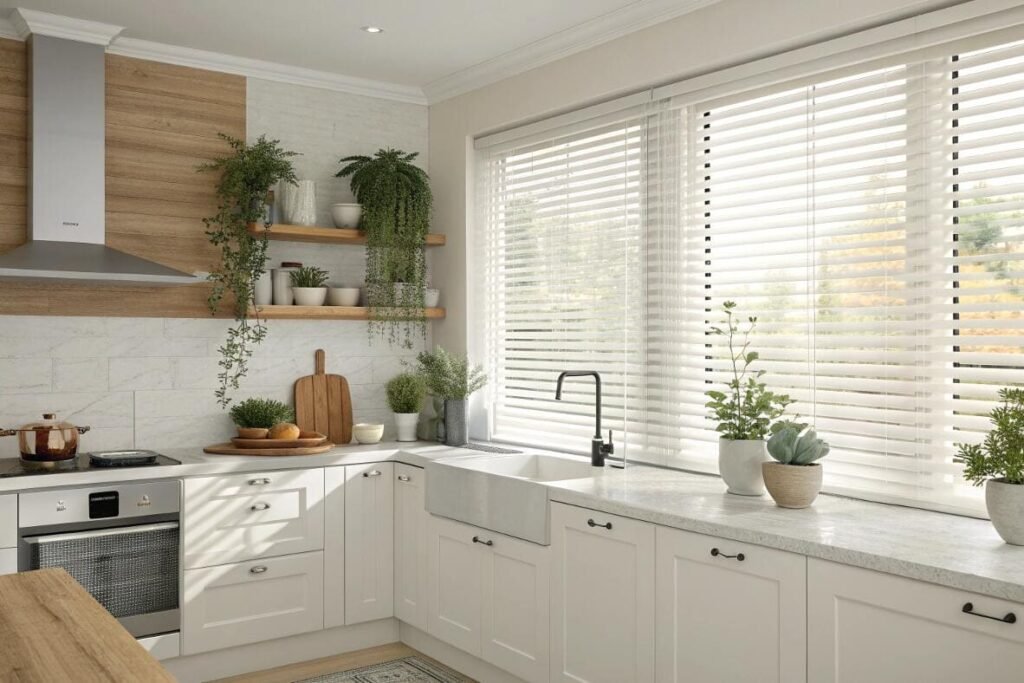Struggling to choose between curtains and blinds[^1] for your project? You want a solution that looks great, performs well, and fits the budget, but the options are overwhelming.
The main difference is that blinds are "hard" window covering[^2]s made of materials like wood or vinyl, offering precise light control, while curtains are "soft" fabric panels. For a modern, functional aesthetic with superior durability, blinds are often the better choice, especially for commercial and large-scale residential projects.
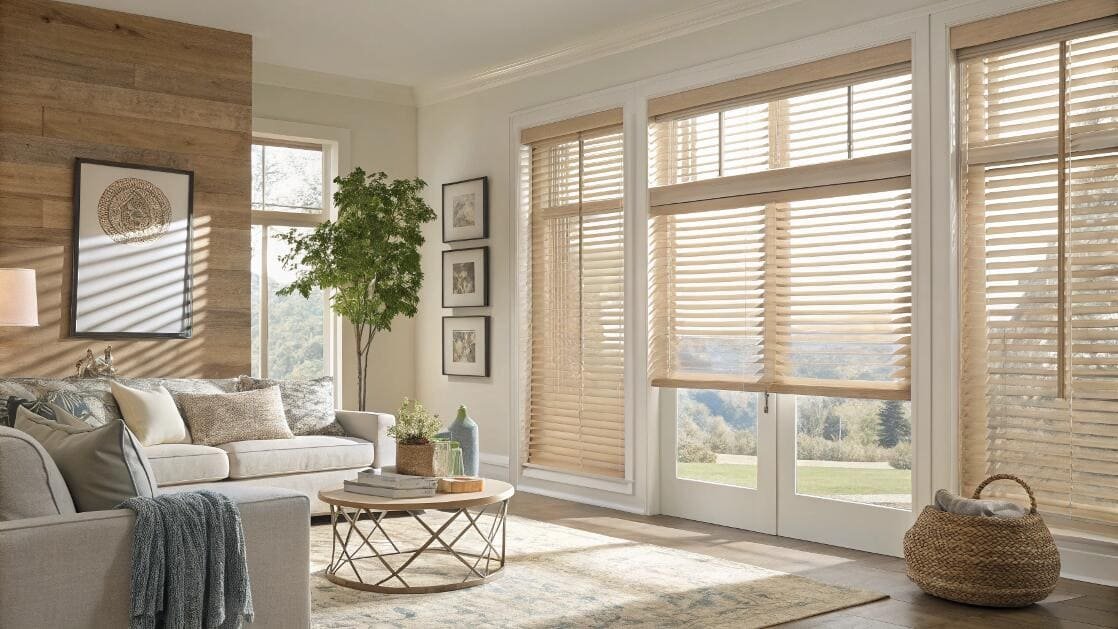
Choosing the right window treatment is one of the most common challenges my clients face. Whether you’re an interior designer like Emma, working on a high-end residential project, or a contractor outfitting a new office building, the decision between curtains and blinds impacts everything from aesthetics to energy bills. Having spent years in the window treatment industry, I’ve seen firsthand how the right choice can make or break a space. I’m here to share what I've learned to help you decide.
Is it better to have curtains or blinds?
Tired of outdated curtains that collect dust and offer limited control? You need a modern, practical solution that enhances your space without creating maintenance headaches.
Ultimately, the choice depends on your priorities. Blinds offer superior light control, are easier to clean, and have a sleek, modern look. Curtains provide a softer aesthetic and can offer better insulation[^3] depending on the fabric, but are harder to maintain. For most of my clients' projects, functionality wins, making blinds the preferred option.
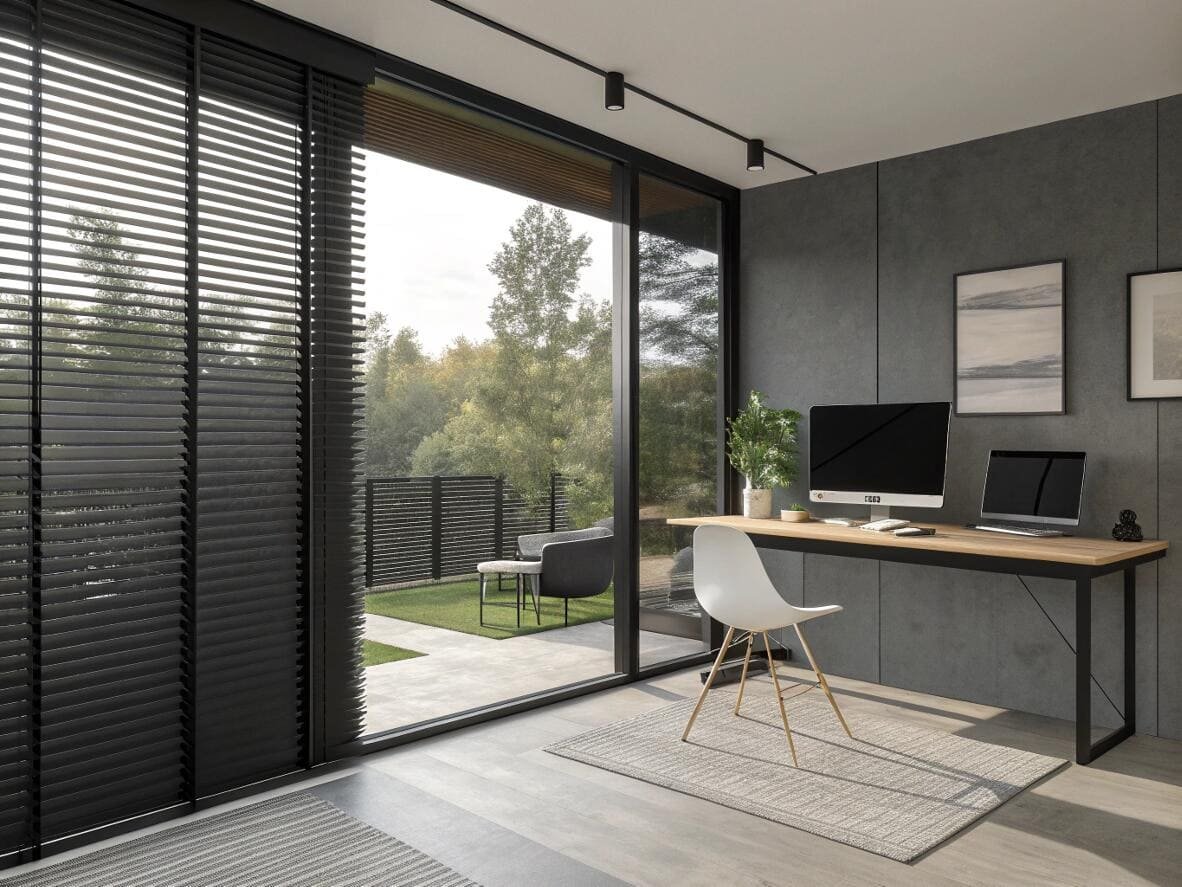
When I first started VelaBlinds, I spoke with countless project contractors and designers. A recurring theme was the need for window treatments that were not only stylish but also incredibly functional and durable. Emma, an interior designer I often work with, once told me, "My clients love the soft look of curtains, but they hate the dust and the fact that they're either open or closed. There's no in-between." This is where blinds truly shine. They are made from hard materials like wood, vinyl, or aluminum, which makes them far more durable and resistant to wear and tear than fabric curtains[^4]. Plus, cleaning is as simple as wiping them down, a huge plus for both residential and commercial settings[^5]. Curtains, on the other hand, often require professional dry cleaning to look their best. For projects where practicality, longevity, and precise control are key, blinds are almost always the superior investment.
| Feature | Blinds | Curtains |
|---|---|---|
| Light Control | Excellent, with adjustable slats for precision. | Good, but limited to open or closed positions. |
| Maintenance | Easy to wipe clean. | Requires washing or dry cleaning. |
| Durability | High, made of hard materials like wood or vinyl. | Varies by fabric, prone to fading and tearing. |
| Aesthetic | Modern, minimalist, and clean. | Soft, traditional, and adds texture. |
| Best For | Kitchens, bathrooms, offices, modern homes. | Bedrooms, living rooms, traditional homes. |
Why do Americans use blinds instead of curtains?
Wondering why so many American homes feature blinds? It seems like a simple design choice, but it often comes down to practicality and a preference for modern aesthetics.
Americans often choose blinds for their affordability, ease of installation, and superior light control. Blinds allow for adjustable privacy and light filtering, a feature curtains don't offer. Their minimalist look also fits well with contemporary architectural styles prevalent in the U.S.

From my experience exporting to the North American market, I've noticed a strong preference for products that are both functional and cost-effective. Blinds hit both of these marks perfectly. They are generally less expensive than custom curtains, a significant factor for builders and homeowners alike. The ability to tilt the slats is a game-changer for privacy; you can let light in without giving passersby a clear view inside, which is a big deal in suburban neighborhoods. Furthermore, the clean lines of blinds complement the open-plan and minimalist interior design trends that have been popular in the States for years. While curtains are still used, often layered over blinds for a softer look, blinds serve as the functional base that provides the essential light and privacy control that homeowners demand.
How do smart blinds outperform traditional curtains in modern applications?
Are your manual curtains feeling outdated in your smart home? You're missing out on the convenience, energy savings, and security that automated window treatments provide.
Smart blinds integrate seamlessly with home automation systems, allowing you to control light and privacy with a tap on your phone or a voice command. They can be scheduled to open and close automatically, improving energy efficiency and home security, features that traditional curtains simply cannot match.
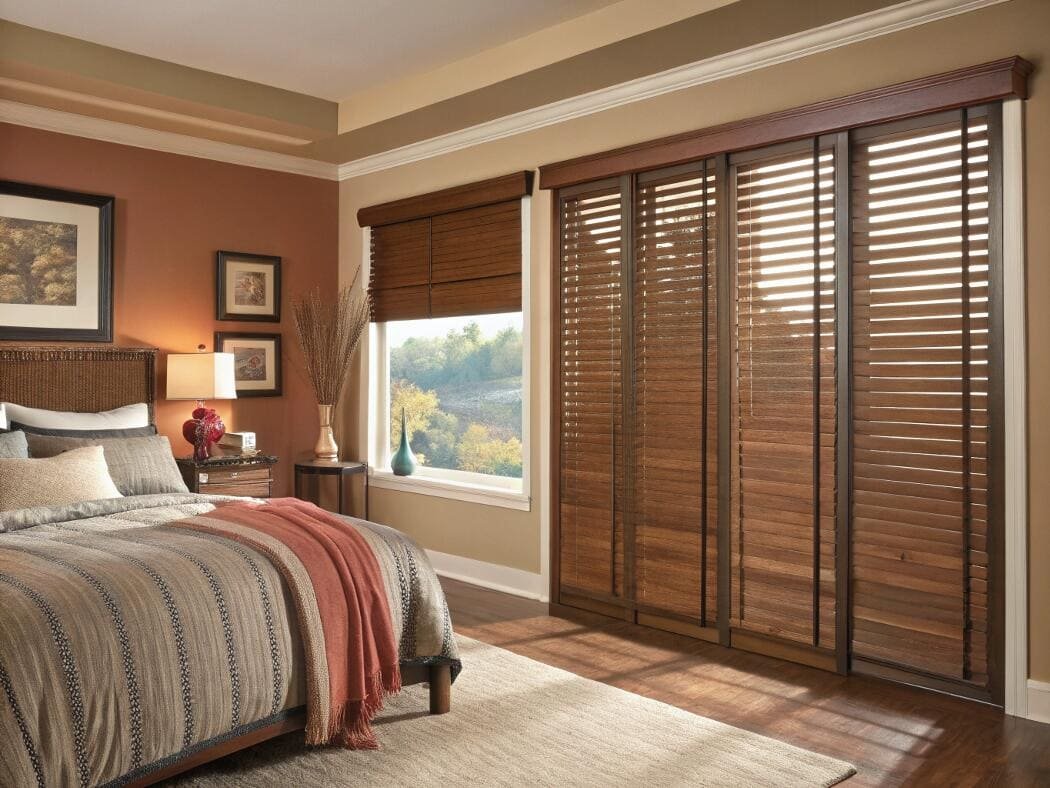
For a client like Emma, who specializes in smart home projects, the conversation has moved beyond simple aesthetics. It's about creating an integrated living experience. Smart blinds are a core component of this. Imagine your blinds automatically closing during the hottest part of the day to reduce solar heat gain[^6] or opening in the morning to wake you up with natural light. This isn't just about convenience; it's about intelligent home management. With smart blinds, you can create schedules and scenes that adapt to your lifestyle. For example, a "movie night" scene could dim the lights and close the blinds simultaneously. From a security perspective, having your blinds move automatically can make it seem like someone is home, even when you're away. Traditional curtains, no matter how beautiful, remain a static element. Smart blinds are dynamic, responsive, and an essential part of a truly modern commercial or residential building.
What insulates better, curtains or blinds?
Worried about high energy bills from heat loss or gain through your windows? Your window coverings could be the culprit, letting your heating and cooling efforts literally go out the window.
Generally, thick, heavy curtains with a thermal lining are better insulators than standard blinds. However, specialized insulated blinds, like cellular or honeycomb shades, can trap air and offer superior insulation, sometimes even outperforming curtains.

While it's true that a heavy drape can reduce heat loss, the conversation about insulation is more nuanced. Standard blinds, with their slats, do allow for some heat transfer. But at VelaBlinds, we focus on performance. Many of our modern blind systems are designed specifically for thermal efficiency. Cellular shades are a prime example; their honeycomb-shaped pockets trap air, creating a powerful insulating barrier against the window. This can reduce heat loss in the winter and block solar heat gain in the summer by as much as 45% or more. So while a basic vinyl blind might not offer much insulation, high-performance blinds can be an incredibly effective tool for managing a building's energy consumption, often surpassing the capabilities of traditional curtains.
What keeps heat out better, blinds or curtains?
Is the summer sun turning your space into a greenhouse? Relying on air conditioning alone is expensive and inefficient when your windows are working against you.
Light-colored blinds are generally better at keeping heat out because they reflect sunlight and its thermal energy away from the window. Curtains, especially dark-colored ones, tend to absorb heat. Highly reflective blinds can reduce heat gain by up to 45%.

When I work with contractors on commercial buildings, managing solar heat gain is a top priority. It directly impacts HVAC costs and occupant comfort. Blinds are the winner in this category. Their slats can be tilted to deflect direct sunlight upwards towards the ceiling, lighting the room without heating up surfaces. Light-colored blinds are particularly effective because they reflect the sun's rays back outside. In contrast, curtains, even light-colored ones, absorb some heat and can still allow warmth to radiate into the room. For maximum cooling, specialized solar shades or reflective blinds are the best option, designed specifically to block UV rays and reduce heat transfer, making them a smarter choice for energy-efficient buildings.
Which is cheaper, window blinds or curtains?
Starting a new project and trying to manage a tight budget? Window treatments can be a surprisingly large expense, and choosing the wrong one can be a costly mistake.
Generally, blinds are cheaper than curtains. Basic, off-the-shelf blinds can cost as little as $30 per window, while curtains often start at a higher price point due to fabric and hardware costs. Custom options for both will increase the price significantly.
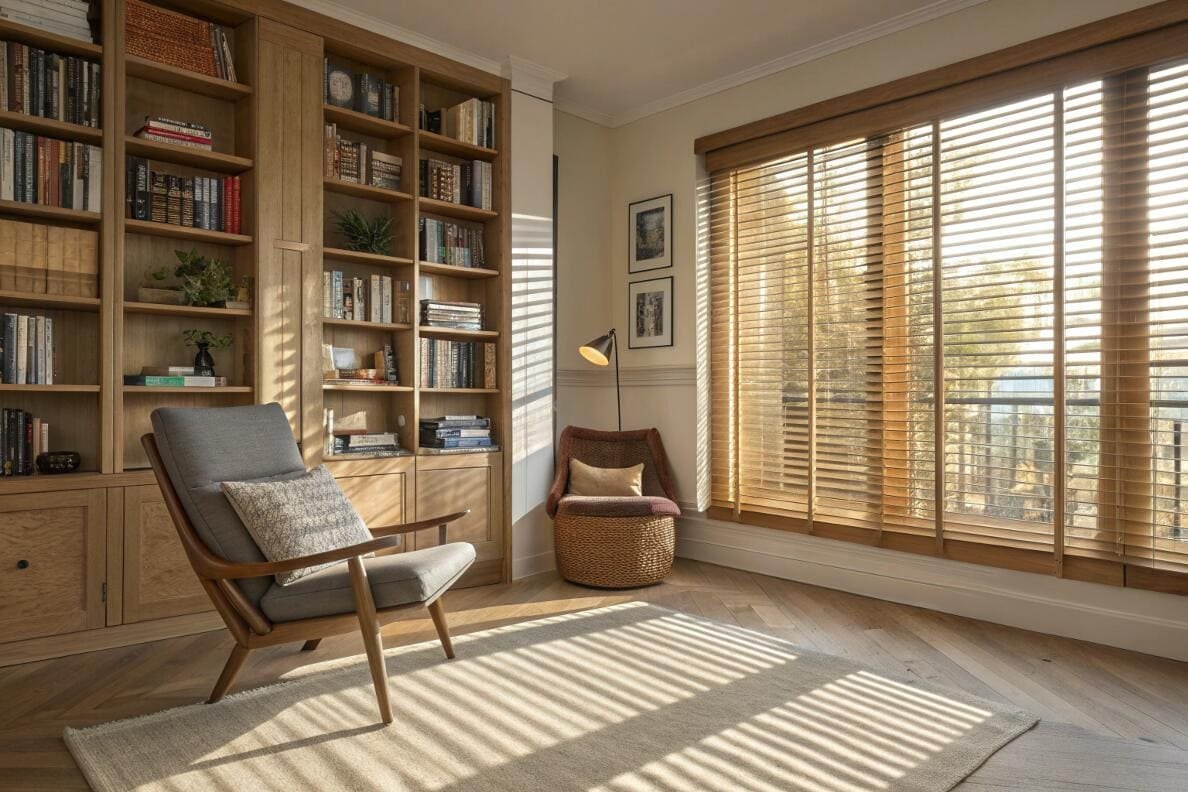
From a purchasing standpoint, this is a question I address daily. For my clients managing large projects, the cost difference can be substantial. Blinds require less material and have a more streamlined manufacturing process, which keeps the upfront cost down. Curtains involve more fabric and more complex labor, plus the added cost of rods, rings, and other hardware, which all adds up. While a luxury, custom-made silk drape will obviously cost more than a standard vinyl mini-blind, when comparing standard-quality options for an entire house or office floor, blinds consistently emerge as the more budget-friendly choice. This allows contractors and designers to allocate more of their budget to other critical project features without compromising on a clean, functional window covering.
Do curtains or blinds increase home value?
Looking for smart upgrades that add real value to a property? While decorative, not all window treatments[^7] provide a return on investment when it's time to sell.
High-quality, permanent window treatments like custom blinds or shutters can increase a home's perceived value and appeal to buyers. They are seen as a move-in ready upgrade. While curtains can enhance aesthetics, they are often considered personal decor and are less likely to impact an appraisal.
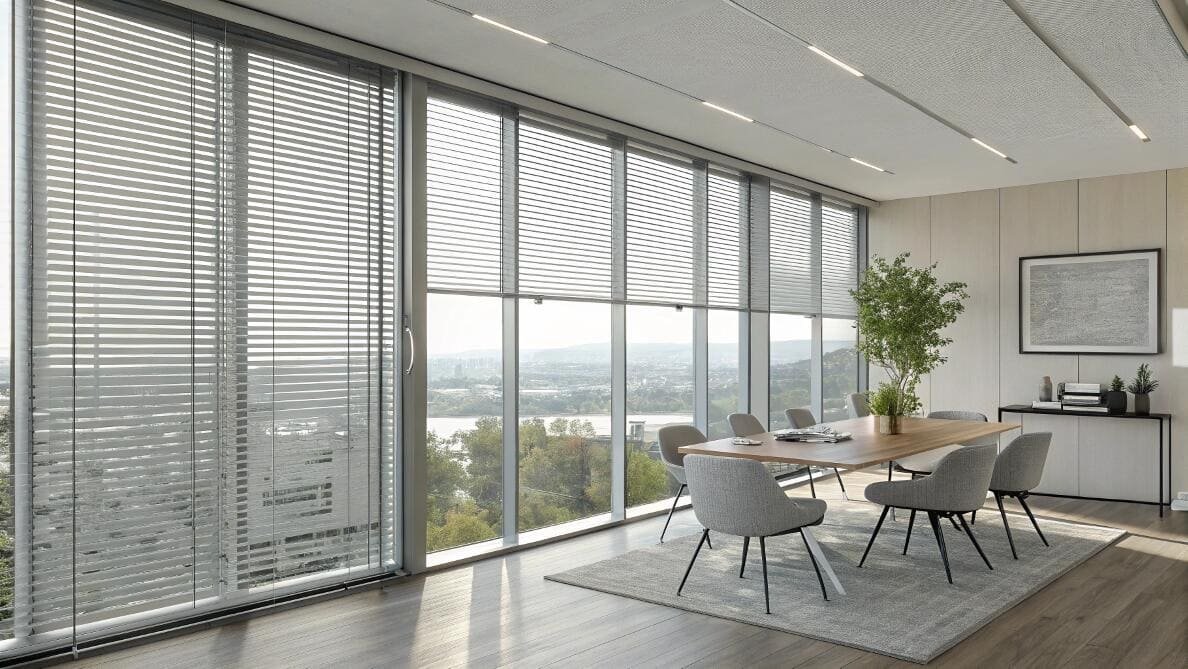
I often advise my partners that the key to adding value is to invest in upgrades that are both functional and have broad appeal. Custom-fit, high-quality blinds[^8] check both boxes. Appraisers and potential buyers see them as a permanent fixture and a sign of a well-maintained, modern home. Features like energy efficiency and smart automation add a modern, practical benefit that buyers are increasingly looking for. In fact, a recent study showed that staged homes with updated window treatments sold for significantly more. Curtains, on the other hand, are often subject to the buyer's personal taste. A buyer might see them and immediately think, "I'll have to replace those." Blinds, especially in neutral colors and timeless styles, are a much safer bet for increasing a property's desirability and resale value.
Conclusion
For most commercial and modern residential projects, blinds offer a superior combination of precise control, durability, low maintenance, and cost-effectiveness compared to curtains. They are a valuable, lasting upgrade.
---
[^1]: Explore the advantages of blinds, including light control and durability, to make an informed choice for your space.
[^2]: Find out which window coverings can help you save on energy costs while looking great.
[^3]: Explore the insulation properties of blinds and curtains to improve your home's energy efficiency.
[^4]: Learn about the aesthetic appeal and insulation properties of curtains to see if they fit your needs.
[^5]: Explore the ideal window treatments for offices and commercial spaces to enhance functionality.
[^6]: Understand how blinds can effectively manage heat and improve comfort in your home.
[^7]: Get insights into the latest trends in window treatments to elevate your space.
[^8]: Learn why investing in quality blinds can increase your home's value and appeal.Partner with VelaBlinds for Your Next Project
Smart window treatments shouldn't be complicated. After working with 500+ distributors and contractors worldwide, I've streamlined the process to get you quality products, competitive pricing, and reliable support - every time.
Why project professionals choose VelaBlinds:
- ✅ Fast, Accurate Quotes - Detailed specs and pricing within 24 hours
- ✅ Transparent Pricing - No hidden fees, volume discounts clearly outlined
- ✅ Quality Assurance - Direct partnerships with certified OEM manufacturers
- ✅ Project Support - Dedicated account manager from quote to delivery
Start your next project:
📧 Quick Quote: Send your requirements to info@velablinds.com
📱 Direct Contact: WhatsApp +86 137 2012 8317
🌐 Browse Solutions: https://velablinds.com/
📁 Product Resources: Access spec sheets, catalogs & project files
Paul Chen, Founder
"I built VelaBlinds to solve the real challenges I faced as a project buyer - long lead times, unclear specs, and unreliable suppliers. Let's discuss how we can power your projects with smarter blinds."
Serving distributors and contractors across North America, Europe, and Australia since 2018.

